Cooked cabbage can be crisp with a mild and sweet flavor. Cabbage also can be served raw in salads and slaws and on sandwiches and burgers.
Cabbage comes to harvest during the cool and cold fall and winter months.
There are three kinds of round-headed cabbage: white, red, and Savoy.
The leaves of the white and red cabbage are usually smooth and shiny with prominent veins. The leaves of the Savoy cabbage are light green and crinkled.
Favorite cabbage recipes
Sliced Cabbage Salad Made Simply
Corn Beef and Cabbage Slow Cooked
How to Make Cabbage Soup with No Recipe
Savory Radish-Cabbage Coleslaw
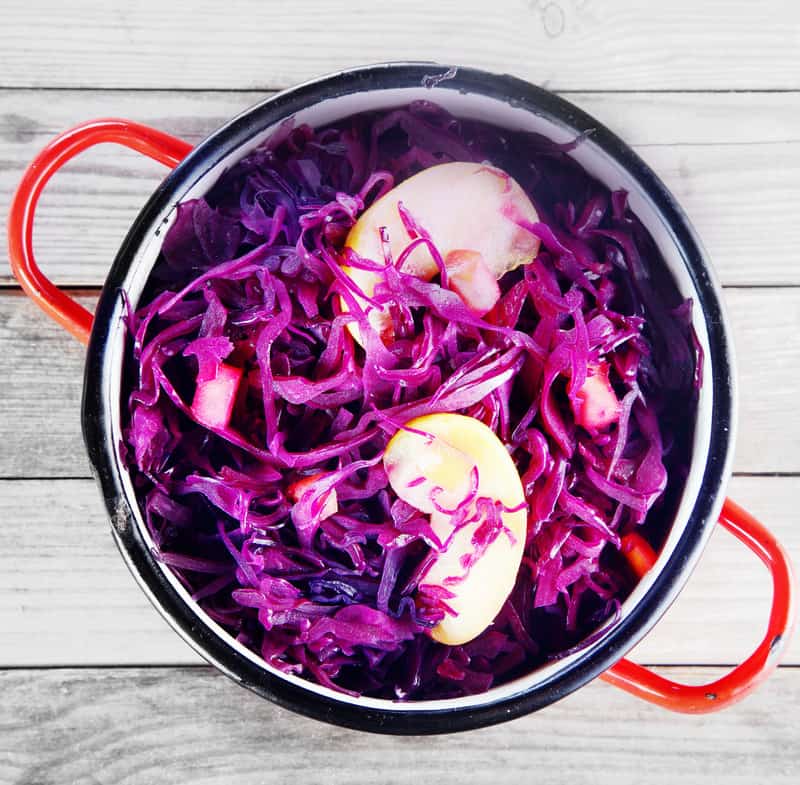
Types of cabbage
There are more than 400 varieties of cabbage. Not all of them are round-headed. Here are common cabbages:
- White round-headed cabbage has pale green leaves. It is eaten raw in salads, cooked as a hot vegetable, and pickled as sauerkraut. This is the most popular cabbage in the United States.
- Red cabbage has reddish-purple leaves and can be eaten raw or cooked. Red cabbage recipes often include acid fruit, vinegar, lemon, or wine. This is the most popular cabbage in Germany and Eastern Europe.
- Savoy cabbage is also called curly cabbage. Its soft, crinkled leaves vary from pale to dark green. Savoy cabbage can have a loose, slightly cone-shaped head. It is the most tender and mellow flavored of the round-headed cabbages and requires the least amount of cooking. This cabbage is named for the region where it is believed to have originated: the Savoy which straddles the Alpine regions of Italy and France.
- Other cabbages: Other popular cabbages are green cabbage, sometimes called spring cabbage, which has a loosehead and a pale yellow-green heart, and Chinese cabbage also called Napa cabbage which does not belong to the same species as the round-headed cabbages.
Kitchen Helpers from Amazon:
- Oster Vegetable Steamer
- Chef’s Knives Set of 6
- EZ Off Jar Opener for Weak Hands
- Pepper Core Remover Stainless Steel
- Kitchen Utensils – Set of 35
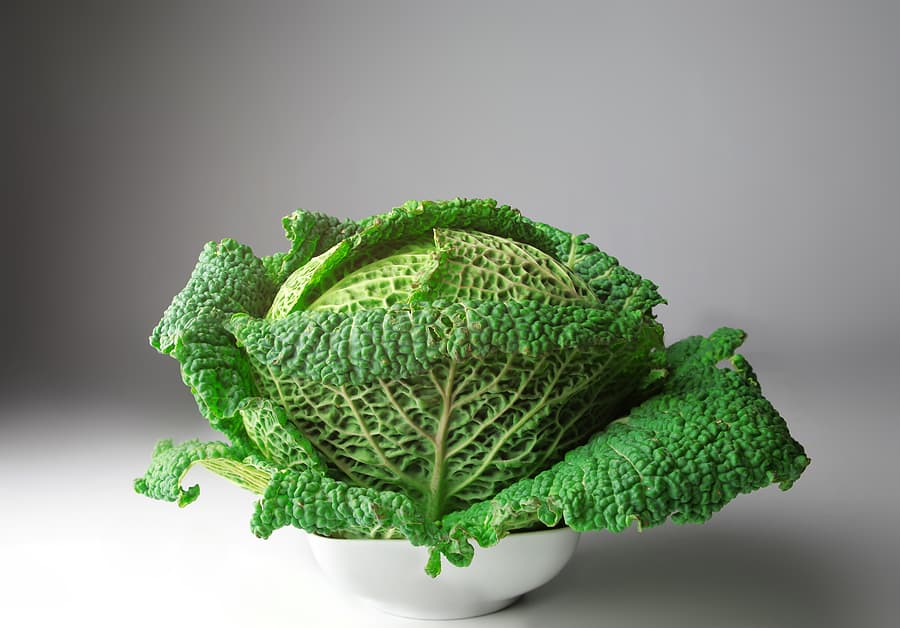
How to choose cabbage
- Select cabbage that is heavy for its size and compact; with shiny, crisp, well-colored leaves. Cabbage heads should be firmly packed and be unblemished and free of cracks.
- Avoid cabbage with yellowed leaves, a strong smell, or a woody, split core. Avoid Savoy cabbage that has thin, wilted leaves or a cracked head.
- Cabbage leaves will be the darkest on the outside of the head. As cabbage ages, the outer leaves are pulled off and lighter leaves are revealed. The color of a cabbage’s leaves can indicate the age of the cabbage.
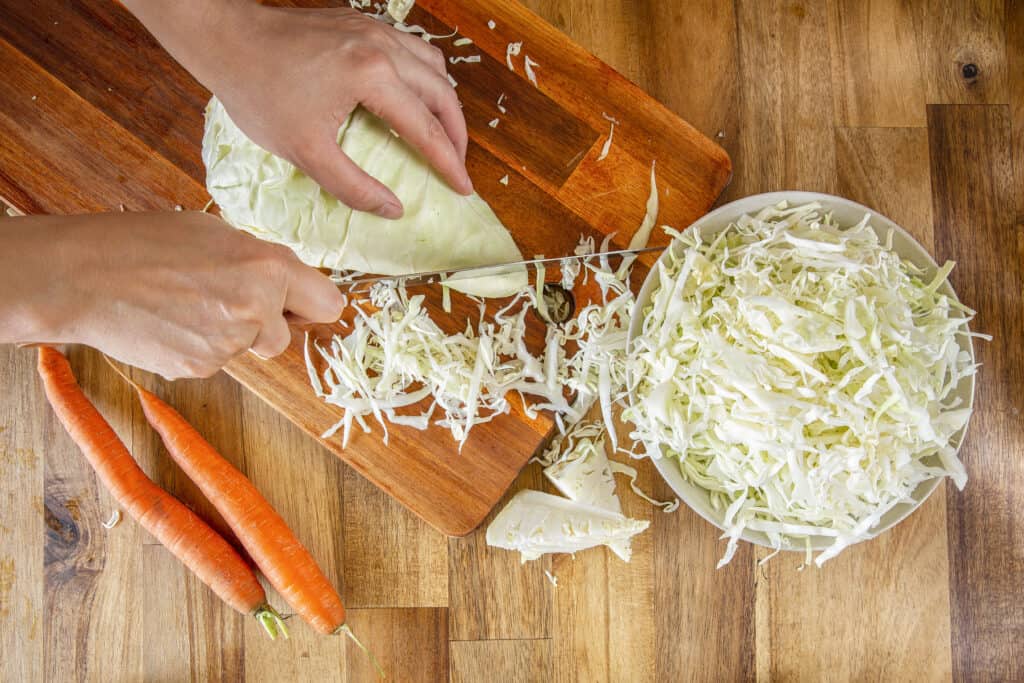
How to prep cabbage
- Soak cabbage in salt water or vinegar for about 15 minutes before using to free the tightly packed leaves of insects. Then rinse the head thoroughly in cold running water.
- Remove the core before cooking or shredding the cabbage. First, remove the first few layers of leaves. Then use a thin-bladed knife to cut a cone-shaped section out of the core.
- If you want shredded cabbage, cut the head into quarters and then cross-cut thinly.
- For the mildest flavor and tenderness, cut out and discard the fibrous thick ribs from the outer leaves.
How to store cabbage
- Cabbage will keep for about 2 weeks in the vegetable drawer or in a perforated plastic bag in the refrigerator. Cut cabbage should be stored away from other foods.
- Cabbage can be frozen after being blanched. Blanch shredded cabbage for 1 minute. Blanch cabbage cut into wedges for 2 minutes.

How to steam cabbage
- Add a few inches of water to a pot then insert a steamer basket. The water should not touch the bottom of the steamer basket.
- Bring the water to a simmer over medium-high heat.
- Add shredded cabbage and cover.
- Steam for 4 to 5 minutes, until tender.
How to blanche cabbage
- Use tongs to dip cabbage leaves in boiling water for about 30 seconds
- Transfer the leaves to cold water to refresh.
- Dry the leaves with a kitchen towel or paper towels
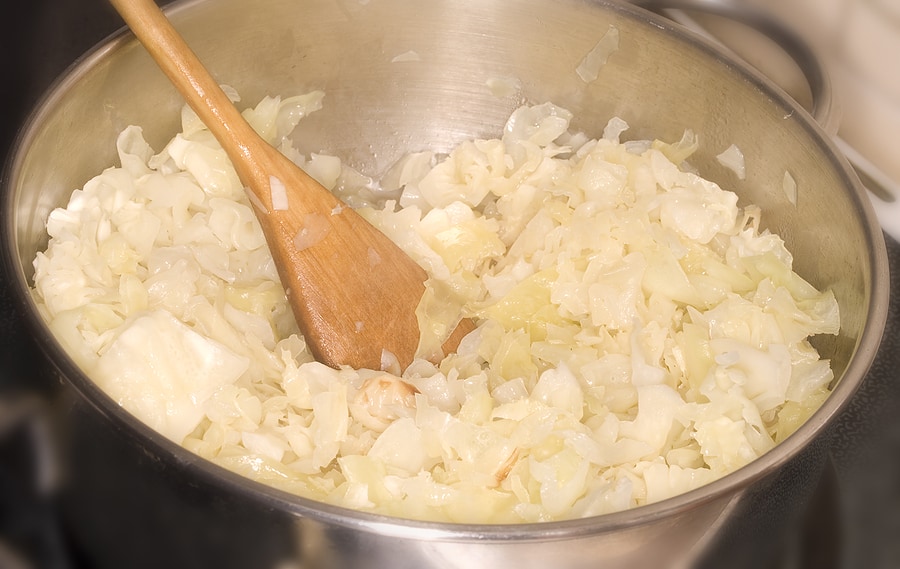
How to boil cabbage
- Shred or cut cabbage into wedges.
- Bring a lightly salted pot of water to a boil.
- Put cabbage in the pot and boil for about 3 to 5 minutes for shredded cabbage, about 10 minutes for wedges.
- Remove the cabbage with a slotted spoon and dry on a kitchen towel or a paper-towel-lined plate.
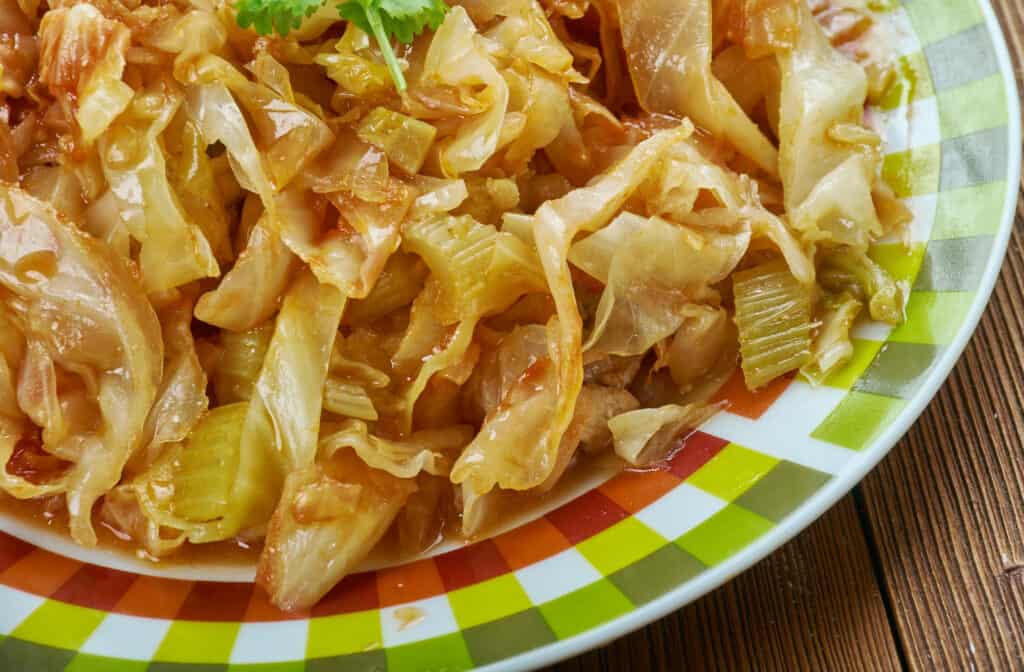
How to sauté cabbage
- Place a tablespoon of oil in a large skillet and place over medium-high heat.
- Add thinly sliced or shredded cabbage and season with salt and pepper.
- Cook, stirring often, until cabbage is tender, about 10 minutes.
How to stir-fry cabbage
- Shred cabbage leaves.
- Heat 2 tablespoons of vegetable oil in a wok.
- Add the cabbage and 2 sliced garlic cloves.
- Stir-fry until the cabbage starts to wilt then add a quarter cup or slightly more vegetable stock.
- Cover and cook for 3 minutes or until just tender.
How to roast cabbage
- Preheat oven to 425 degrees F.
- Cut cabbage into wedges or 1-inch thick rounds.
- Place cabbage on a large rimmed baking sheet, toss with oil and season with salt and pepper.
- Bake until cabbage is golden and tender, about 25 to 30 minutes.
How to braise cabbage
- Shred or coarsely cut a medium head of cabbage.
- Coat a large skillet with unsalted butter or olive oil.
- Add the cabbage and stir over medium heat until the cabbage wilt and turns light brown around the edges.
- Add salt, pepper lightly, and 1 cup of stock or white wine.
- Cover the skillet tightly and simmer until the cabbage is just tender about 30 minutes.
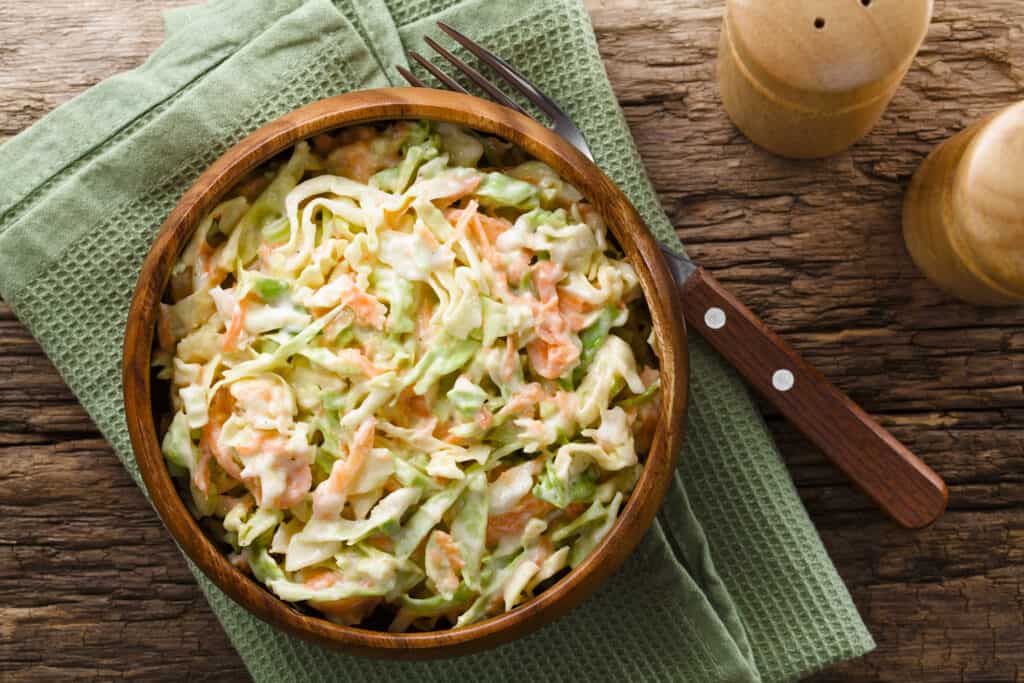
How to serve cabbage
- Cabbage can be eaten raw or cooked.
- Raw cabbage can be sliced, shredded, or chopped to be used in salads or to make coleslaw.
- Cooked cabbage can be steamed, braised, sautéed, or stuffed. It can be added to soups, stews, stir-fries, and stuffings.
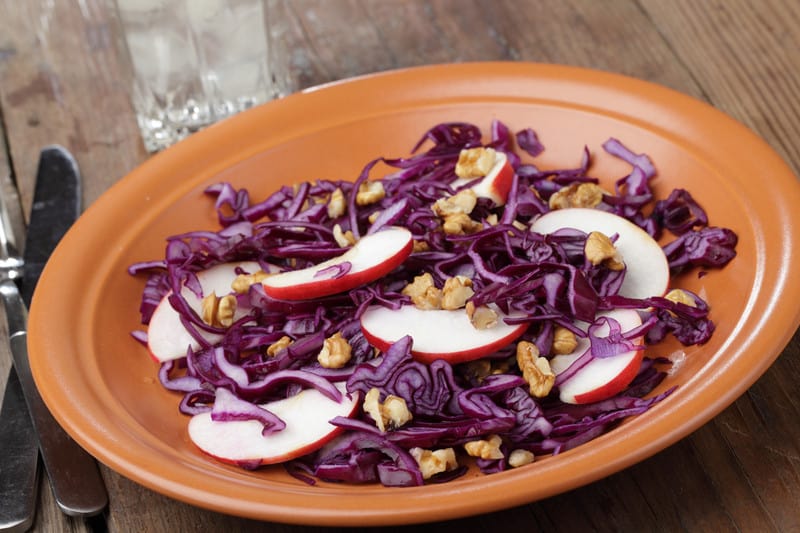
Red cabbage serving suggestions
The red cabbage is beautiful on the plate and in the garden. Red cabbage pickles are better than green cabbage. It is stout and pungent. The Germans sometimes call red cabbage Red Kraut.
- Red cabbage leaves are generally thicker than green or Savoy cabbage and not quite as tasty. Red cabbage is often pickled (see below).
- If you are not pickling red cabbage, add it raw to green cabbage in coleslaw or for color in a green salad.
- As a stand-alone or side dish let red cabbage plays off of stronger flavors.
- Fry sliced red cabbage lightly in bacon fat, add just a dash of vinegar so that the cabbage stays red during cooking, and serve the dish garnished with deviled eggs.
Try this quick recipe: Red Cabbage and Apples
Quick red cabbage pickling recipe
- Chop a large head of red cabbage.
- Add one cup of chopped onions and one tablespoon of salt along with sweet-and-sour syrup (three cups of vinegar and one cup of honey).
- Simmer the combined ingredients for ten minutes and pack boiling hot into sterilized canning jars.
- Seal while hot.
Savoy cabbage serving suggestions
- Savoy cabbage can be eaten raw or cooked.
- Savoy cabbage has a flavor affinity for garlic, olive oil, polenta, potatoes, sweet onions, and white beans.
- Quick Cook Recipe. Slice savoy cabbage into 1/4-inch strips. Heat 2 cloves garlic and a quarter cup extra virgin olive oil in a nonstick pan. When the oil is hot, add the cabbage and a dash of salt. Cook and stir until the cabbage is just tender. Cabbage that is cooked tender-crisp will remain sweet. Overcooked cabbage will lose texture and flavor.
Cabbage flavor partners
- White cabbage has a flavor affinity for bacon, butter, caraway, carrots, game birds such as pheasant or goose, juniper berry, onions, potatoes, and sausage.
- Red cabbage has a flavor affinity for apples, red wine, and vinegar.
- Savoy cabbage has a flavor affinity for garlic, olive oil, polenta, potatoes, sweet onions, and white beans.
Cabbage nutrition
- Cabbage is an excellent source of vitamin C, folic acid, and potassium.

Get to know cabbage
- The cabbage family is large and includes kale, broccoli, collards, Brussels sprouts, cauliflower, sea kale, and kohlrabi.
- Cabbage has been used as a food for more than 3,000 years. It was eaten in ancient Egypt. Several varieties of loose-leafed varieties were developed by the ancient Greeks and Romans.
- The earliest-headed cabbage appeared in Northern Europe 2,000 years ago where its ability to withstand cold temperatures aided in the spread of its cultivation. The word cabbage is a derivation of the French word caboche which is colloquial for “head”.
- A headed cabbage is actually an elongated terminal bud. A cabbage head can weigh between 2 and 7 pounds (.9 to 3 kg) and have a diameter between 4 and 8 inches (10-20 cm).
- The largest producers of cabbage are Russia, China, South Korea, Japan, and Poland.
The botanical name of cabbage is Brassica oleracea var. capitata.
Cabbage articles at Harvest to Table:
How to Harvest and Store Cabbage
Cabbage Growing Problems Troubleshooting
Imported Cabbage Worm Organic Pest Control
Cabbage Looper Organic Pest Control
Seven Ways to Cook and Serve Cabbage
Sliced Cabbage Salad Simply Made
Corn Beef and Cabbage Slow Cooked
How to Make Cabbage Soup with No Recipe
Savory Raddish-Cabbage Coleslaw
More kitchen tips:
Bring your harvest to the table. Kitchen prep tips and easy recipes for the vegetables you grow. Click below for vegetable prep and recipes you can use now.
- Almonds
- Apples
- Apricot
- Aprium
- Artichoke
- Arugula
- Asparagus
- Avocado
- Bamboo Shoots
- Banana
- Basil
- Beans, Dried
- Beans. Long
- Beans, Shell
- Beans, Snap
- Beets
- Bitter Melon
- Blackberry
- Bok Choy
- Broccoli
- Broccoli Raab
- Brussels Sprouts
- Cabbage
- Cardoon
- Carrots
- Cauliflower
- Celeriac
- Celery
- Chard
- Chayote Squash
- Cherimoya
- Cherries
- Chestnut
- Chickpea
- Chinese Cabbage
- Chives
- Cilantro
- Citron
- Clementine
- Collards
- Coriander
- Corn, Sweet
- Corn, Baby
- Corn Salad, Mache
- Cranberry
- Cress
- Cucumber
- Daikon
- Dandelion
- Dill
- Eggplant
- Endive, Belgian
- Endive and Escarole
- Fava Beans
- Fig
- Florence Fennel
- Garlic
- Ginger
- Grapefruit
- Grapes
- Guava
- Horseradish
- Jerusalem Artichoke
- Jicama
- Jujube
- Kale
- Kiwifruit
- Kohlrabi
- Kumquat
- Leeks
- Lemongrass
- Lemons
- Lettuce
- Lime
- Mache (Corn Salad)
- Mandarin Orange
- Mango
- Maple Syrup
- Marjoram
- Melons
- Michihili
- Mint
- Mizuna
- Mushrooms
- Mushrooms, Cremini
- Mustard Greens
- Napa Cabbage
- Nectarine
- Okra
- Olives
- Olive oil
- Onions
- Oranges
- Oregano
- Parsley
- Parsley Root
- Parsnips
- Passion Fruit
- Pawpaw
- Peaches
- Pears
- Peas, Garden Snap
- Peas, Snow
- Pei Tsai
- Peppers, Chili
- Peppers, Sweet
- Persimmon
- Pineapple
- Pineapple Guava
- Plantain
- Plums
- Pluots
- Pomegranate
- Potatoes
- Prickly Pear
- Pumpkin
- Quince
- Radicchio
- Radishes
- Raspberries
- Rosemary
- Rhubarb
- Rutabaga
- Sage
- Salsify
- Sauerkraut
- Savory
- Shallots
- Sorrel
- Spinach
- Squash, Summer
- Squash, Winter
- Strawberries
- Sunchokes
- Sunflower
- Sweet Potato
- Swiss Chard
- Tangerine
- Taro
- Tarragon
- Thyme
- Tomatillo
- Tomato
- Turnip
- Turnip Greens
- Yams















